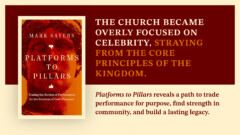Today, as part of the Reading Classics Together effort, we begin looking at the next classic of the Christian faith–William Wilberforce’s Real Christianity. We’ve gone from C.S. Lewis’ Mere Christianity to Wilberforce’s Real Christianity. It’s nothing more than coincidence.
If you are interested in reading along with us, there is still plenty of time. Over the next seven weeks we will be reading this classic of the Christian faith, one chapter per week, and posting thoughts and reflections at this blog. You can go ahead and purchase a copy of the book or even find it online. Do note that the book has gone through many editions and revisions, some substantially longer than others; I will be reading from the David C. Cook edition edited by James Houston.
Our task today was really just to make sure we all have the book and to ensure we have at least a sense of what it is all about. In this excerpt from Wilberforce’s original introduction to Real Christianity (originally titled “A Practical View of the Prevailing Religious System of Professed Christians, in the Higher and Middle Classes in This Country Contrasted with Real Christianity”), we see his reason for writing it:
I’m not going to attempt to either convince skeptics or answer the questions unbelievers always seem to ask, but rather point out some of the problems with the beliefs and actions of those who already claim to be Christians. I’d like to attempt to contrast what we see in the lives of many, perhaps most, who make this claim with what I understand the Bible teaches about what it means to believe in Christ. I am disturbed when I see the majority of so-called Christians having such little understanding of the real nature of the faith they profess. Faith is a subject of such importance that we should not ignore it because of the distractions or the hectic pace of our lives. Life as we know it, with all its ups and downs, will soon be over. We all will give an accounting to God of how we have lived. Because of this fact, I’m not going to pull any punches in what I write. I hope you will seriously consider what is contained within these pages.
He offers this encouragement to his readers: “If what I write seems too rigid or austere, I would only ask that you check what I have to say against what the Bible teaches. That is the only opinion that counts. If you accept the authority of the Bible, I assume you will agree.”
So it is that simple. The purpose of this book is to help readers discern true faith from false beliefs. It is written in the context of eighteenth century England where Christian faith was assumed; there was a cultural Christianity that led everyone to claim Christian faith even if there was little evidence to back the claim. In that way it is probably not too different from twenty-first century America. And for that reason I think we will find this book both relevant and applicable. I am looking forward to diving into it.
Next Week
For next week, please read the first chapter. Then come back here on Thursday, March 12 with any questions or comments.










